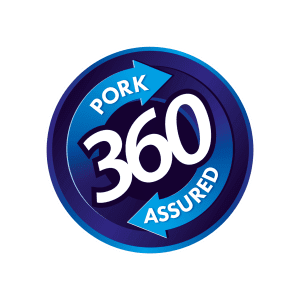Dr LAura Roberts, Veterinary Service, Western Cape
Disease surveillance is one of the main functions of Veterinary Services, and a vital component of disease control. To control a disease, one needs to know where it is, what control methods to use and then whether the control is working. However, the exact aims and mechanisms of disease surveillance are not always clearly recognised or remembered.
Firstly, surveillance is often defined as more than just the collection of data; it is also the collation, analysis, interpretation and dissemination of information. All these facets should be planned together to ensure the efficiency of the system. There is no use in collecting information that is not used for anything.
The broad aims of disease surveillance include proving absence of diseases, usually with trade significance and, by the same token, early detection of exotic diseases (e.g. peste des petits ruminants). These aims involve simply determining presence or absence of a disease. Additionally, surveillance can target endemic diseases and serve to estimate prevalence or incidence of a disease. This could be related to monitoring the progress of a control strategy (e.g. bovine brucellosis). Thirdly, efforts should be made to detect emerging or new diseases as early as possible and to control and learn about them.
The surveillance methods used will depend on the target disease(s) (diagnostic methods required, transmission, consequences etc.), the aim of surveillance (as above), the population at risk and the personnel and resources available, to name a few factors. As with many things, the methods with the most conclusive outputs are often the most expensive and intensive. However, with some creativity, cheaper methods can still be useful. Hoinville et al (2009) report the observation by a workshop attendee (Haesler) that the adverse effects of a disease must be weighed against the cost of both its surveillance and control. If the budget is used up on surveillance and there is no money left to control the disease, the exercise may be pointless. Ideally, though, thorough surveillance may be a tool to motivate an increase in budget.
Surveillance methods can vary from dedicated surveys based on a careful sample size calculation to less specific, more constant surveillance which could simply involve a
disease notification system. The terms active and passive surveillance have been used traditionally, and can be seen as based on whether the action is initiated by the investigator or the observer respectively (does someone go out looking for the disease or wait for someone else to see it and tell them?). However, these terms tend to only identify the two extremes of how data is collected. Hoinville at al. (2013) propose that these terms should still be used but suggest the additional term “enhanced passive surveillance” to describe more organised systems where investigators encourage and assist disease recognition and reporting.
Realistically, a veterinary service that does no awareness training with the public and other animal health role players (i.e. is truly passive) will never achieve useful surveillance and will not be able to provide useful information to trade partners. A structured passive surveillance system can be very valuable. The structure could involve specific people or organisations who commit to reporting at set intervals. The OIE Terrestrial Manual disease surveillance chapter refers to “structured population-based” surveillance (e.g. random surveys) and “structured non-random” surveillance (e.g. disease reporting or notifications), a classification based on how units for observation are selected.
Passive (or non-random) surveillance can be based on data collected routinely with a more general purpose, such as ante- or post-mortem abattoir inspections,
Sampling of ostriches for avian influenza surveillance is one of the functions of Veterinary Services.
Laboratory test data (this will help detect subclinical disease), herd production records, private veterinarians’ records or simply daily herd inspection records and observations. Indirect methods such as drug sales could also be considered. Newer, developing methods include syndromic surveillance and participatory epidemiology/ rapid rural appraisal. Syndromic data can potentially indicate an increase in disease incidence before a definitive diagnosis is made and assist with early warning. Participatory epidemiology and rapid rural appraisal (RRA) have been developed for resource poor countries, to assist with monitoring morbidity (signs of illness). Interview methods have been developed to obtain data from farmers and to integrate indigenous knowledge of diseases.
“Passive” methods can be more affordable than a dedicated survey, but may not give accurate estimates of prevalence or be truly representative of the population. There is also heavy reliance on awareness and a good relationship with people reporting. A farmer or private veterinarian who is expected to report livestock disease must know what to look for, how to compile the information, who to tell and be able to do this easily and quickly. Incentives will help ensure an efficient system, especially where more effort or risk is involved (e.g. potential culling of livestock by the state). All possible sources of animal health data should be considered. Emerging diseases especially rely on a good general disease surveillance system to detect when there is an increase in undiagnosed disease and ensure that the agent is identified as quickly as possible.
Ideal disease surveillance (active/ random) would make use of a reliable laboratory test that accurately identifies infected (good sensitivity) and uninfected (good specificity) animals. The surveillance plan would be based on a reasonably accurate census (to get a sampling frame) and knowledge of the population structure and composition (herd size and location, ages, breeds, vaccination status etc.) and then a sample size would be calculated to make sure a representative sample is taken. For an accurate sample size, one unfortunately also needs to estimate what the disease prevalence would be if the disease was present in the population. This depends on the disease, and other factors including the population composition, vector prevalence and immune status. Sample size also depends on the required level of precision and confidence. To be more precise will require more samples.
Next, there is a difference in sample size calculation, depending on the aim of the surveillance. To simply determine presence or absence of disease requires far fewer samples than to estimate prevalence, with the same assumed maximum prevalence and precision. Interestingly, however, when detecting presence/ absence more samples are required when the disease is present at a lower prevalence while the opposite is true when determining prevalence.
To sum up, a simple example of a disease surveillance system would be based on education of animal owners and good communication between owners and Veterinary Services. This should assist with identification of diseases with obvious clinical signs, and may be enough for less trade-sensitive diseases or diseases with fewer major consequences. Any other sources of animal morbidity data should also be included, where possible. Surveillance for sub-clinical diseases will probably require the use of laboratory tests, but the costs of surveillance will then increase, so the need for surveillance and the sampling strategy must be carefully justified.
Monthly report on livestock disease trends as informally reported by veterinarians belonging to the Ruminant Veterinary Association of South Africa (RuVASA), a group of the South African Veterinary Association, December 2018
References
Thrusfield, M. 2005. Veterinary Epidemiology. 3rd ed. Blackwell Science ltd
Chapter 1.4 of the OIE Terrestrial Animal Health Code. http:// w w w . o i e . i n t / i n d e x . p h p ? id=169&L=0&htmfile=chapitre_surveillance_general.htm
Hoinville et al., 2009. Discussing the development and application of methods for effective surveillance in livestock populations. Report of a workshop held prior to the ISVEE conference; Durban, South Africa
Hoinville, et al., 2013. Proposed terms and concepts for describing and evaluating animal-health surveillance systems. Preventive Veterinary Medicine, 112(1-2), pp.1-12.
The South African Pork Producers’ Organisation (SAPPO) coordinates industry interventions and collaboratively manages risks in the value chain to enable the sustainability and profitability of pork producers in South Africa.








